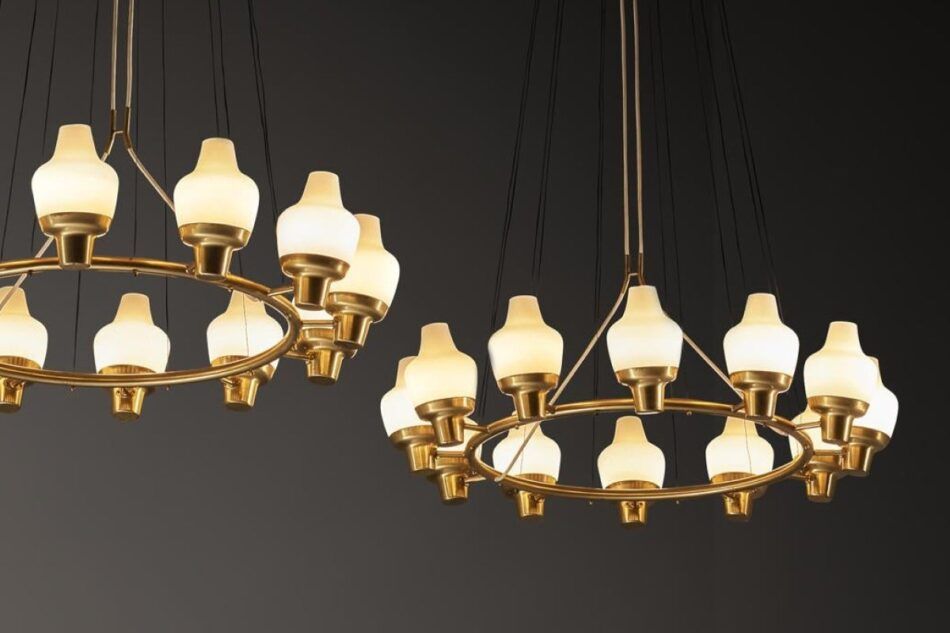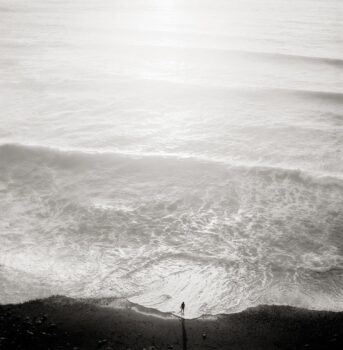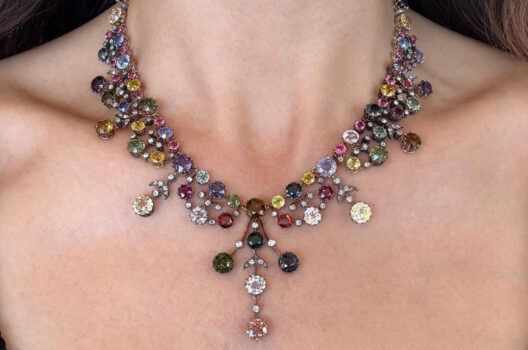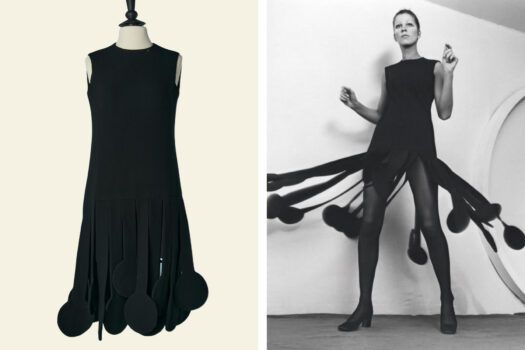Hans Bergström may be the Scandinavian lighting-design powerhouse you’ve never heard of. “Bergström is the Swedish equivalent of Poul Henningsen and Paavo Tynell in both influence and stature,” says Naomi Verbeek, head of design research at the Netherlands-based gallery Morentz, which is currently offering on 1stDibs two monumental brass-and-glass chandeliers that Bergström designed in the 1950s, about midway through his prolific career. Like the output of the two better-known Nordic lighting masters, Verbeek says, “his work fundamentally shaped the experience of space and atmosphere.”
Their exact provenance is unknown, but whatever space originally housed Morentz’s pair of massive luminaires — identified as model 127 in the catalogue of Ateljé Lyktan, the manufacturing concern Bergström founded in 1934 — must have been colossal, perhaps one of the many churches and public buildings for which the company supplied expertly crafted and harmoniously designed fixtures.
Each of the chandeliers has 12 jug-shaped frosted-glass shades. These are evenly arrayed for balanced light distribution around a circular frame of polished brass 39 inches across, which is suspended from a central point by a dozen radiating wires measuring more than six feet long.
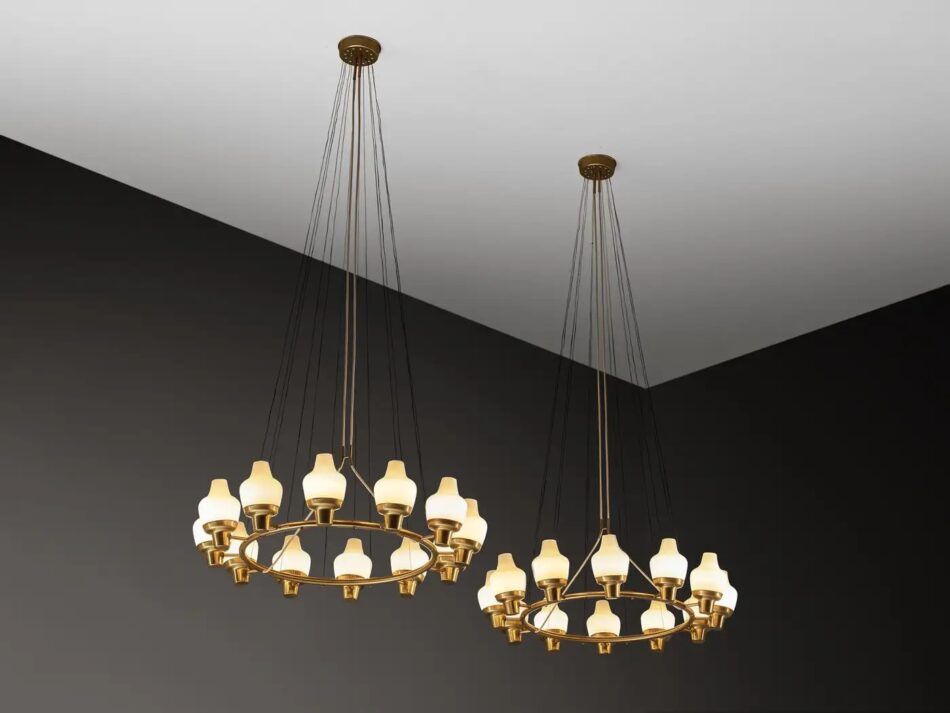
Like Henningsen, the Danish creator of such icons as the Artichoke and PH lamps, who collaborated closely from the Art Deco era into the 1960s on the manufacture of his designs with Copenhagen-based lighting maker Louis Poulsen, and Tynell, the Finnish lighting artist whose fanciful designs were fabricated by his own firm, Taito Oy, Bergström played dual roles as designer and manufacturer, and for the same reason: to ensure that his lamps would be not only beautiful but also functional and well-made.
Ateljé Lyktan, still in operation today, was the pinnacle of Swedish lighting innovation in the 1940s and ’50s, Verbeek says, adding that at the Helsingborg Exhibition of 1955, a prestigious international expo showcasing modern consumer and industrial design, “Bergström stood shoulder to shoulder with the most influential architects and designers of his time.”
Bergström served as Ateljé Lyktan’s sole designer of chandeliers and pendants, table lamps and floor lamps until the early 1960s. “Much of the design interest in Bergström fixtures stems from the variation in shades,” Verbeek says. Bell-shaped, crown-like and tulip-petal glass shades were produced to Bergström’s specifications at well-known Swedish glassworks like Orrefors and Flygsfors. Fabric shades came in the form of pleated cones, lanterns, cupcakes and more.
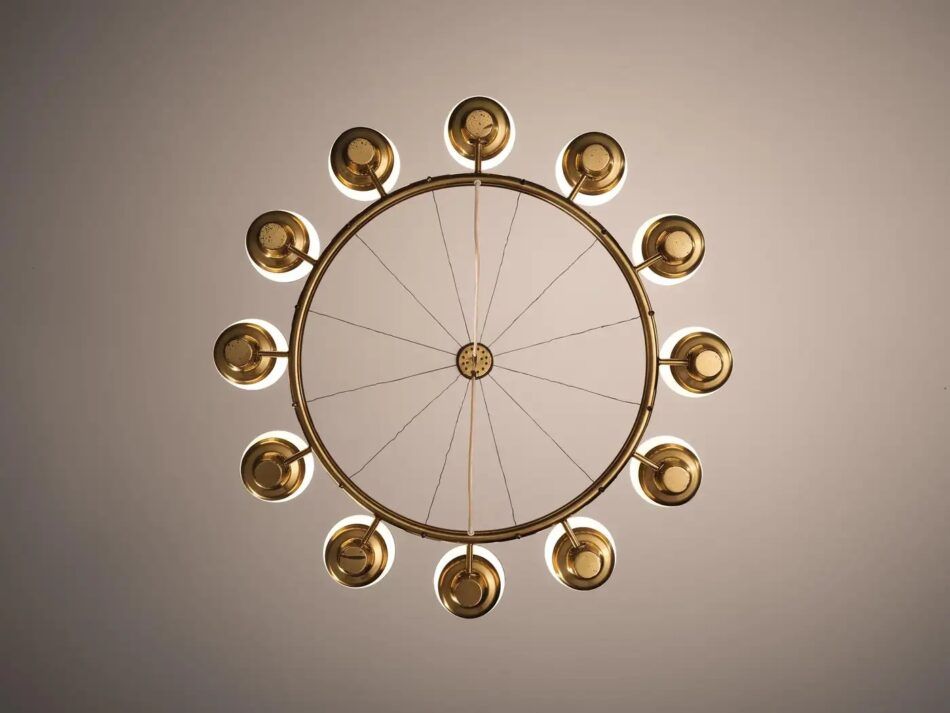
The materials palette at Ateljé Lyktan evolved over the years with trends and technology. In the postwar era, Bergström embraced durable acrylic glass and lightweight molded plastics for his designs, patenting a method for spraying plastic onto a wire frame that foreshadowed the Castiglioni brothers’ cocoon-like 1960 Viscontea pendant for Flos.
Throughout Bergström’s career — from his start as a graduate of Stockholm’s esteemed School of Art and Design in the early 1930s, when electric lighting often still resembled candlesticks or kerosene lanterns, to his death in 1996 at age 86 — his experiments in lighting were guided by one overarching idea. “Bergström believed that light must shine freely. It should never be trapped behind dark, heavy shades,” Verbeek says. “He wanted it to glow through fabric, pass through glass, escape from its cage.”
The model 127 chandeliers, available as a pair or for separate purchase, are space-defining presences to be sure, fit for a grand residence, a building lobby, a restaurant or a soaring house of worship — any interior with the requisite volume crying out for impressive illumination.
